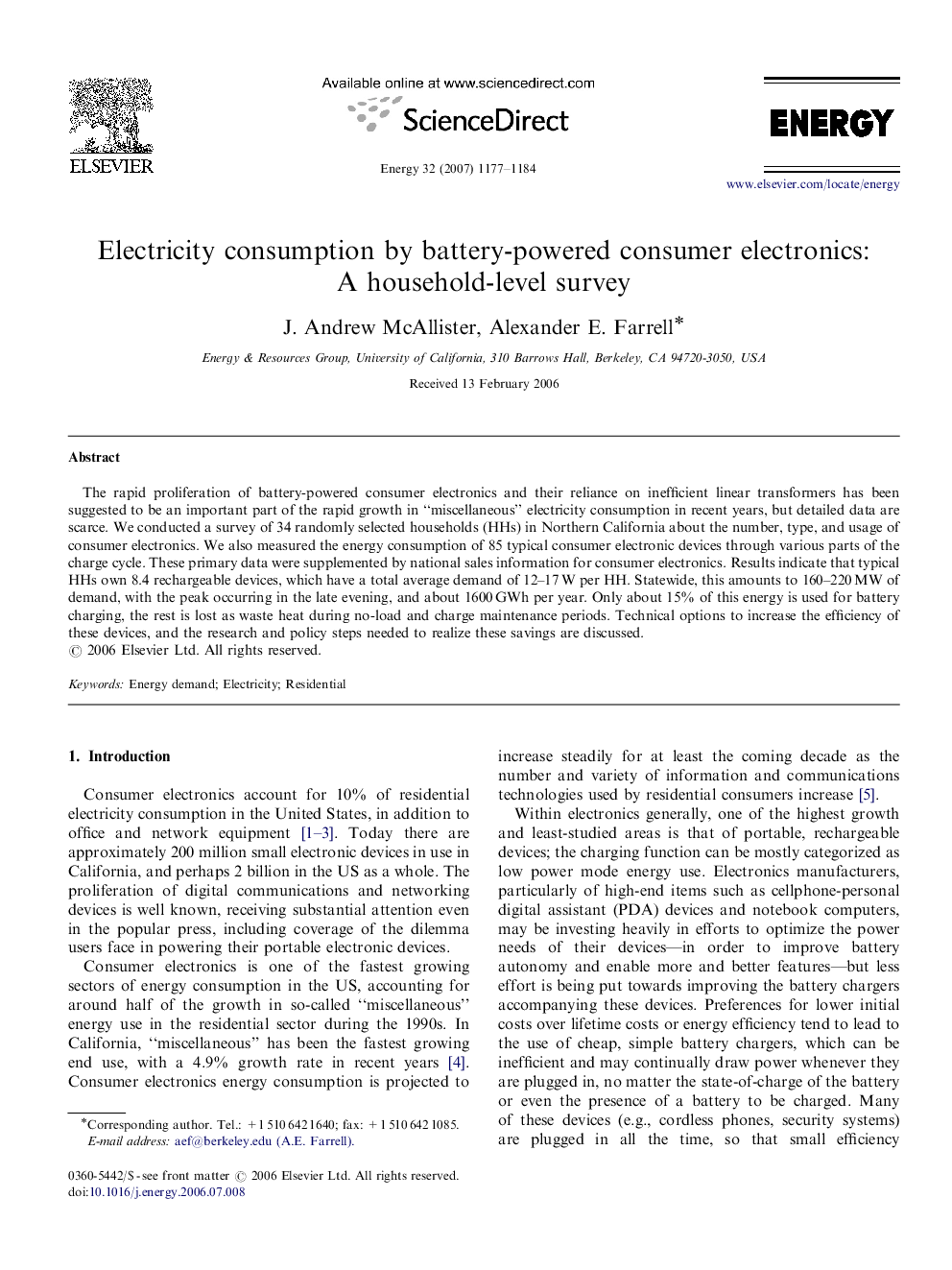| Article ID | Journal | Published Year | Pages | File Type |
|---|---|---|---|---|
| 1735823 | Energy | 2007 | 8 Pages |
The rapid proliferation of battery-powered consumer electronics and their reliance on inefficient linear transformers has been suggested to be an important part of the rapid growth in “miscellaneous” electricity consumption in recent years, but detailed data are scarce. We conducted a survey of 34 randomly selected households (HHs) in Northern California about the number, type, and usage of consumer electronics. We also measured the energy consumption of 85 typical consumer electronic devices through various parts of the charge cycle. These primary data were supplemented by national sales information for consumer electronics. Results indicate that typical HHs own 8.4 rechargeable devices, which have a total average demand of 12–17 W per HH. Statewide, this amounts to 160–220 MW of demand, with the peak occurring in the late evening, and about 1600 GWh per year. Only about 15% of this energy is used for battery charging, the rest is lost as waste heat during no-load and charge maintenance periods. Technical options to increase the efficiency of these devices, and the research and policy steps needed to realize these savings are discussed.
